Appearances and Concealment: the Two Faces of Seoul’s Public Space
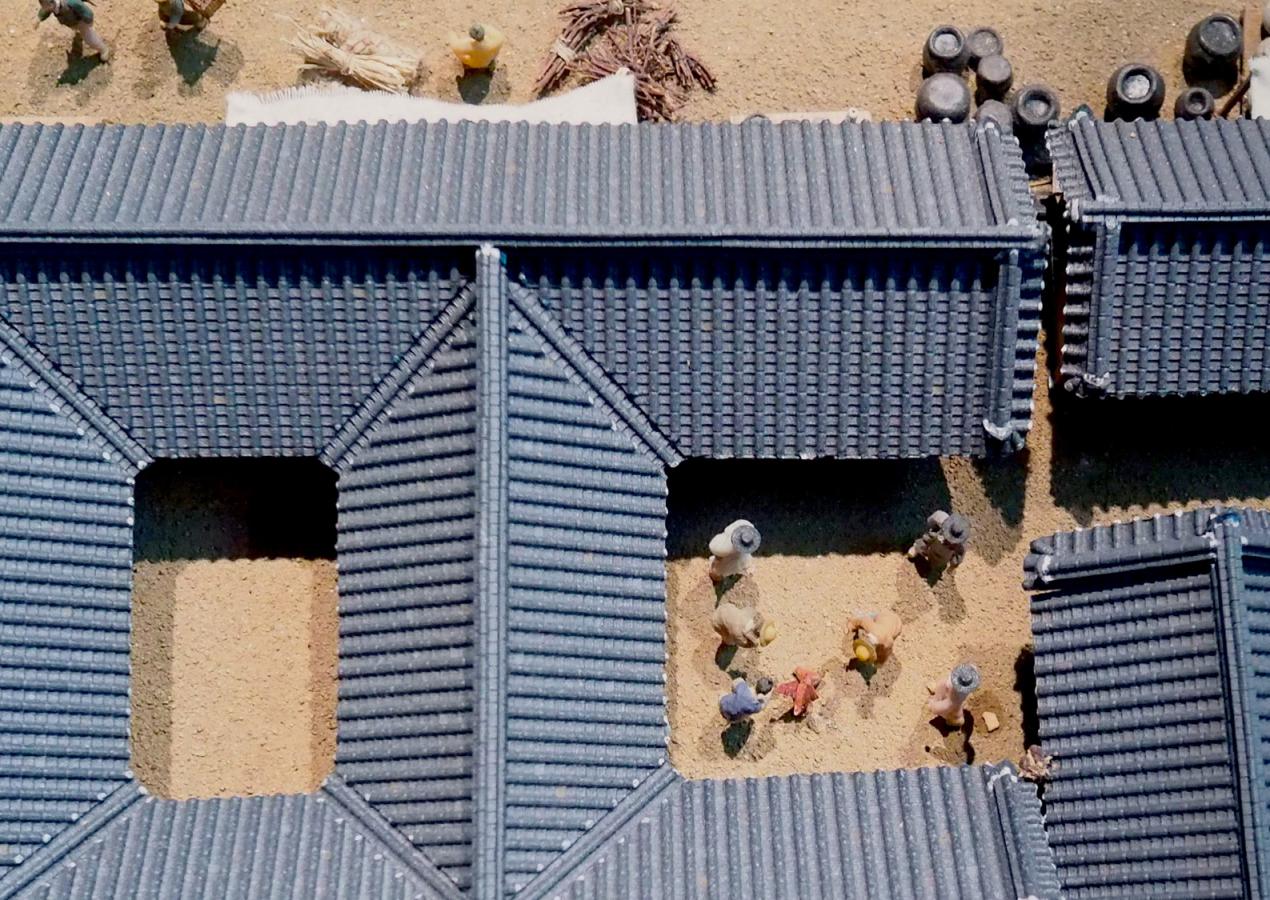
Being half Korean, I had already visited the country's capital city a few times. However, as a child who could not speak the language, my perception of the built environment had always been filtered and guided by the adults of my family. I took the opportunity now, following my degree in town planning and with fairly improved language skills, to experience life as a Seoulite for a few months at my own pace, through my own eyes and ears, naturally biased by my academic background.
Something strikingly different from my last visit, almost a decade ago, was the presence of a number of large public spaces in the city, like the walkaway along the restored Cheonggye stream, the huge park in Yeouido and the Hangang riverside park. Over the last 15 years, Seoul has in fact seen a strong increase in the number of large public spaces in the city, which have a very international feel, and are naturally part of the increasing global competition among cities.
When meeting one of my Korean friends, during our chats we stumbled upon the topic of 'feeling comfortable' in relation to specific types of spaces in the city. "Koreans don't feel comfortable in vast open spaces. Even in the summer, we generally prefer to stay indoors with windows open, rather than sitting plainly outdoors" she stated confidently, and this was later confirmed by many people I confronted with the issue.
If not comfortable to behave freely in public squares and parks, which type of spaces did ultimately host the activities of collective life necessary to maintain and nourish social relationships?
When trying to understand this issue, looking for a specific type of space we attribute to public functions because of our particular cultural background might be misleading. One possible solution may be instead looking for social activities that we generally link with public spaces, and once we found them, trying to analyse the space within which they unfold. This process reveals how, in Seoul, this type of activities primarily takes place in small-scale, enclosed spaces.
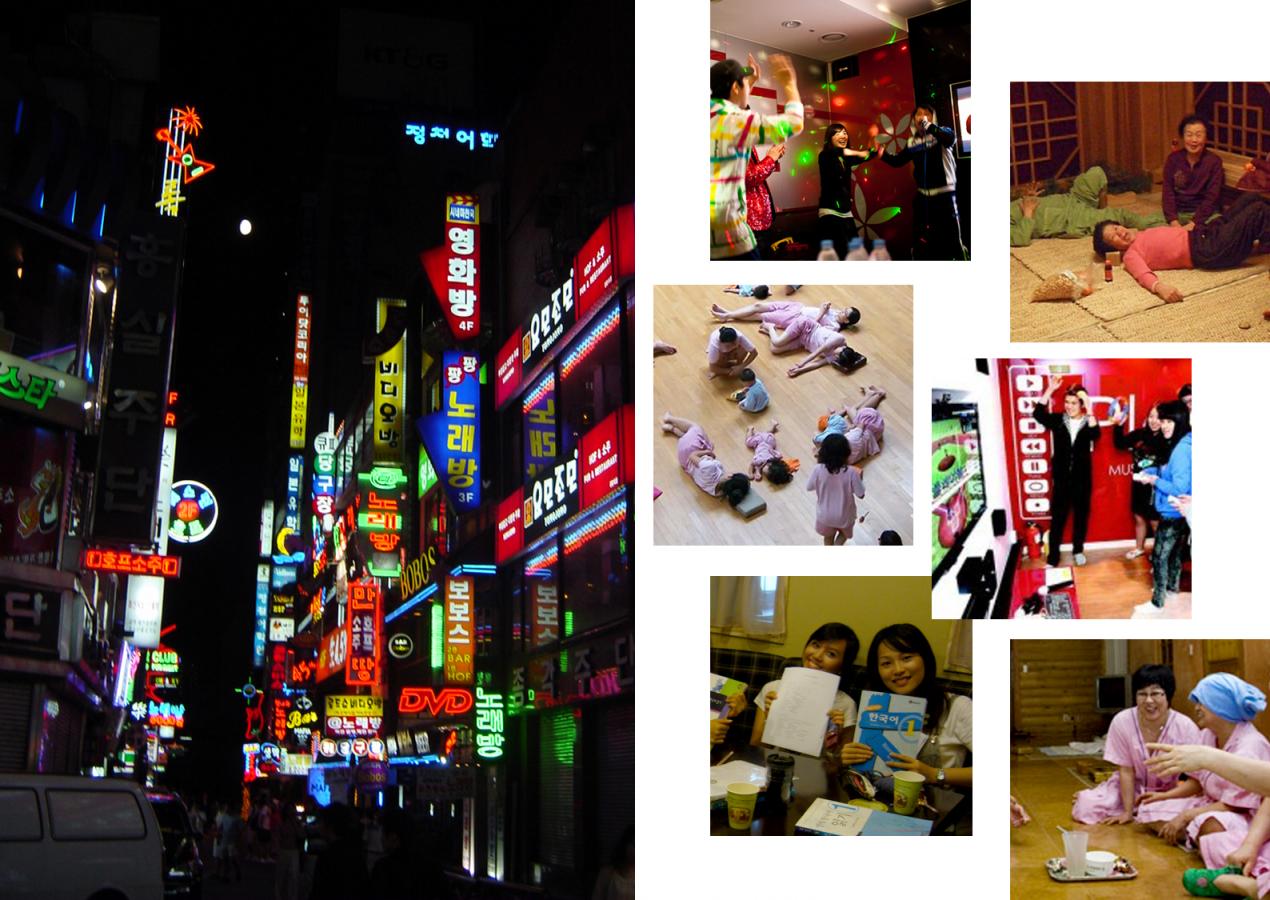 While people often gather at cafés or restaurants, the most representative type of indoor space for collective life can be identified in the uniquely Korean bang. The bang is basically a small business establishment providing a limited number of rooms with a more or less specific purpose: there are norae-bang (singing rooms), pc-bang (computer rooms), jjimjil-bang (a sort of sauna and relaxation space), and many more. There are also multi-bang, spaces hosting all of these different activities. Seoul is studded with these 24/7-accessible private rooms that can be rented by the hour for a very small price (around 10 euro/hour).
While people often gather at cafés or restaurants, the most representative type of indoor space for collective life can be identified in the uniquely Korean bang. The bang is basically a small business establishment providing a limited number of rooms with a more or less specific purpose: there are norae-bang (singing rooms), pc-bang (computer rooms), jjimjil-bang (a sort of sauna and relaxation space), and many more. There are also multi-bang, spaces hosting all of these different activities. Seoul is studded with these 24/7-accessible private rooms that can be rented by the hour for a very small price (around 10 euro/hour).
THE ABSENCE OF PUBLIC SPACES IN TRADITIONAL KOREAN CITIES
Originally, in Korean cities, there was no such thing as public space as we understand it in the western world. Since the setting of Seoul as the capital of the Joseon dynasty in the XVI century, power was centred around royals and aristocrats, and the spaces of the city reflected this specific hierarchy. The city was structured around thoroughfares originating from the royal palace, connecting them with the main access points to the then walled city. These main roads were public in the sense that they were used for public display of power. They were the spaces for the processions of royals and aristocrats alike. It was a space oriented to being seen by other people, thus a space for controlled behaviour.
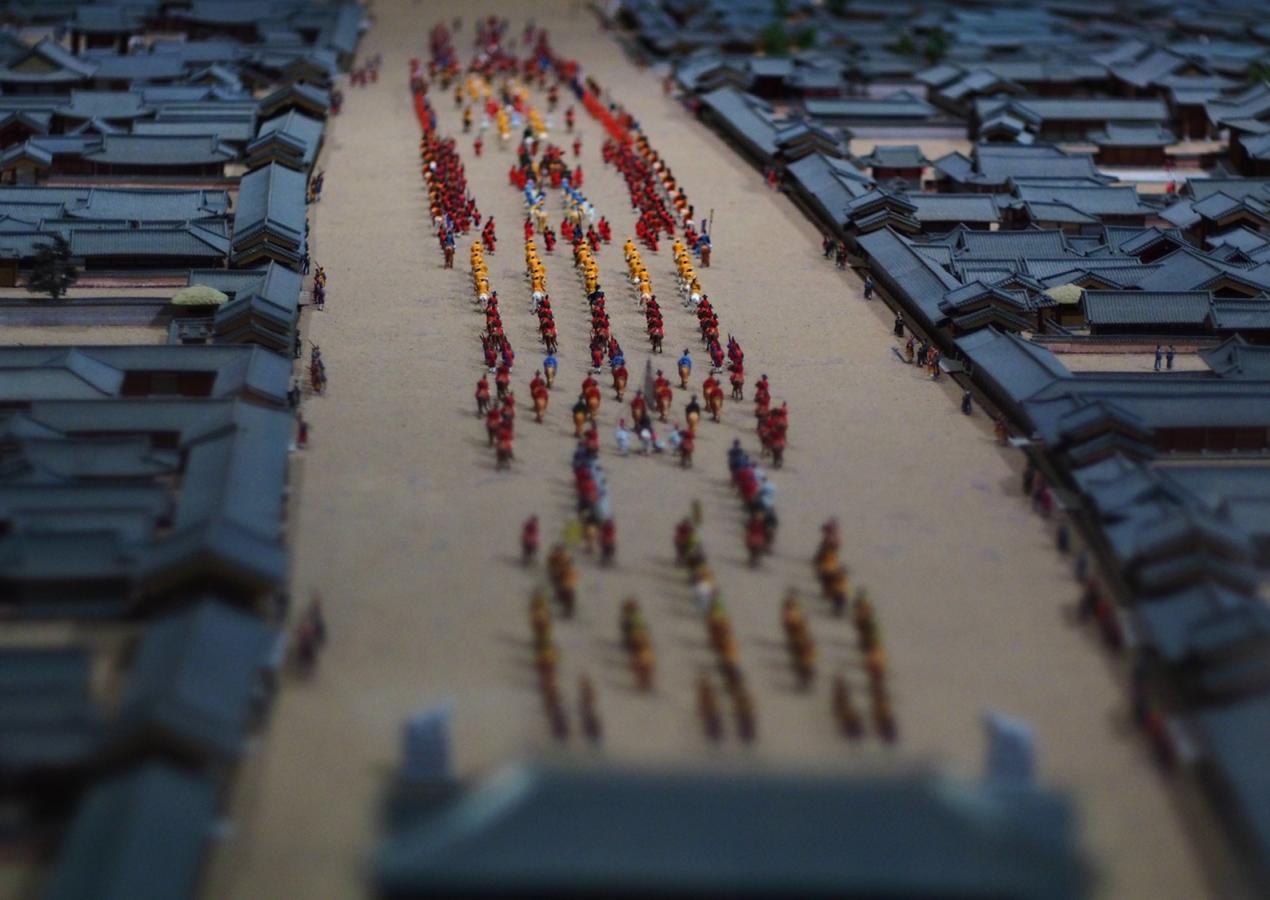 Another level of “public” life could nonetheless be acknowledged. Being a family-centred society, social life in Korea appeared to be played within the protected spaces of the traditional Korean house (main photo top of the blog post). One household comprised an extended family of around 10 to 15 people, spanning up to 4 generations, and life within the familial walls was totally communal and without privacy. Korean houses used to be and still are conceived as private and intimate spaces, extremely introverted and clearly separated from the outside. One crucial element in the design of traditional Korean houses is the internal courtyard (madang), which used to be the centre of this smaller-sized mode of collective life.
Another level of “public” life could nonetheless be acknowledged. Being a family-centred society, social life in Korea appeared to be played within the protected spaces of the traditional Korean house (main photo top of the blog post). One household comprised an extended family of around 10 to 15 people, spanning up to 4 generations, and life within the familial walls was totally communal and without privacy. Korean houses used to be and still are conceived as private and intimate spaces, extremely introverted and clearly separated from the outside. One crucial element in the design of traditional Korean houses is the internal courtyard (madang), which used to be the centre of this smaller-sized mode of collective life.
There seems to be a traditional dichotomy between these two types of public life: one being more connected to public display in processional spaces, where strong social control was exerted by the royal authorities and individual behaviour had to comply to a strict set of rules; the other, in contrast, unfolding within the protected spaces of traditional Korean houses that were home to a smaller-sized intimate community.
These characteristics were further exacerbated during the Japanese colonial era (1910-1945) with military and social control purposes as guiding principles of the development of the city, where protection and concealment of private spaces and practices naturally became even more important for preserving social relations.
POST-WAR URBANIZATION AND THE EMERGENCE OF THE BANG
After 1945 the capital area started to be heavily urbanized through the use of strictly functional principles in response to a huge housing demand generated by the aftermath of the conflict. From late 1980s, the emergence of the apart (apartment complex) as the predominant typology of dwelling in the city forced a radical transformation of Korean housing culture. From individual and separated entities, houses were piled vertically one on top of the other, as Koreans experienced collective housing for the first time in history and had to adapt to a completely new way of life. In parallel, Seoul started to witness the appearance of a network of private rooms for rent sprouting all over the city. An unintended by-product of the country's rapid modernisation, the emergence of these rooms can be seen as a spontaneous response to the need of re-establishing spaces for social interaction that got lost during this process. The courtyard and its social role got pushed out from the private domain of the house into the public realm.
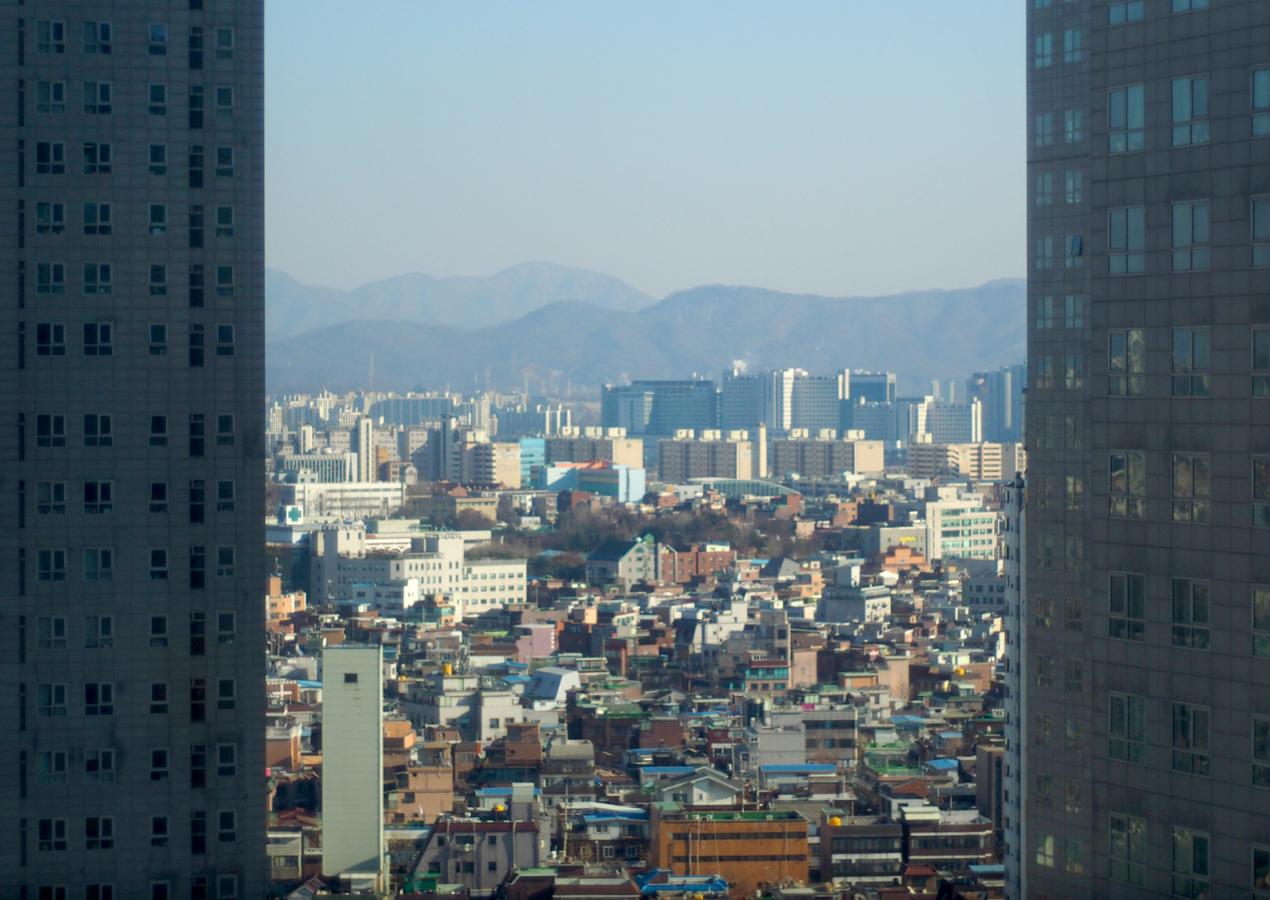 The bang represents an alternative type of space lying between the boundaries of public and private ownership, which appears to be a key host of social life in Korean metropolitan cities. The term bang (literally 'room'), reflects the small scale of this type of space and its traditional character as a space for close interaction rather than a private space for the individual, as we tend to see it in the western world.
The bang represents an alternative type of space lying between the boundaries of public and private ownership, which appears to be a key host of social life in Korean metropolitan cities. The term bang (literally 'room'), reflects the small scale of this type of space and its traditional character as a space for close interaction rather than a private space for the individual, as we tend to see it in the western world.
As social practices in Korea seem to be shaped upon the model of the family, they tend to search for accessible yet intimate spaces that recall those of the private house. Moreover, Koreans are extremely attentive to social display and controlled behaviour when in public. “Losing one's face” may in fact be the worst thing that could happen to a Korean. This cultural legacy is still strongly affecting social life in Korea's public spaces today and the pressure on public behaviour is undoubtedly another factor behind the search for protected spaces.
The bang provides spaces responding to these specific needs, where informal gatherings can take place and people can regain their individuality lost in the anonymous and controlled environment of the Korean metropolis. They are particularly popular among young people who still live at home to freely interact with their peers and develop social relations. As it is not common to have guests in Korean houses and unaffordable rent prices force people to live with their parents until their marriage, this type of space ends up playing an important social role in the city.
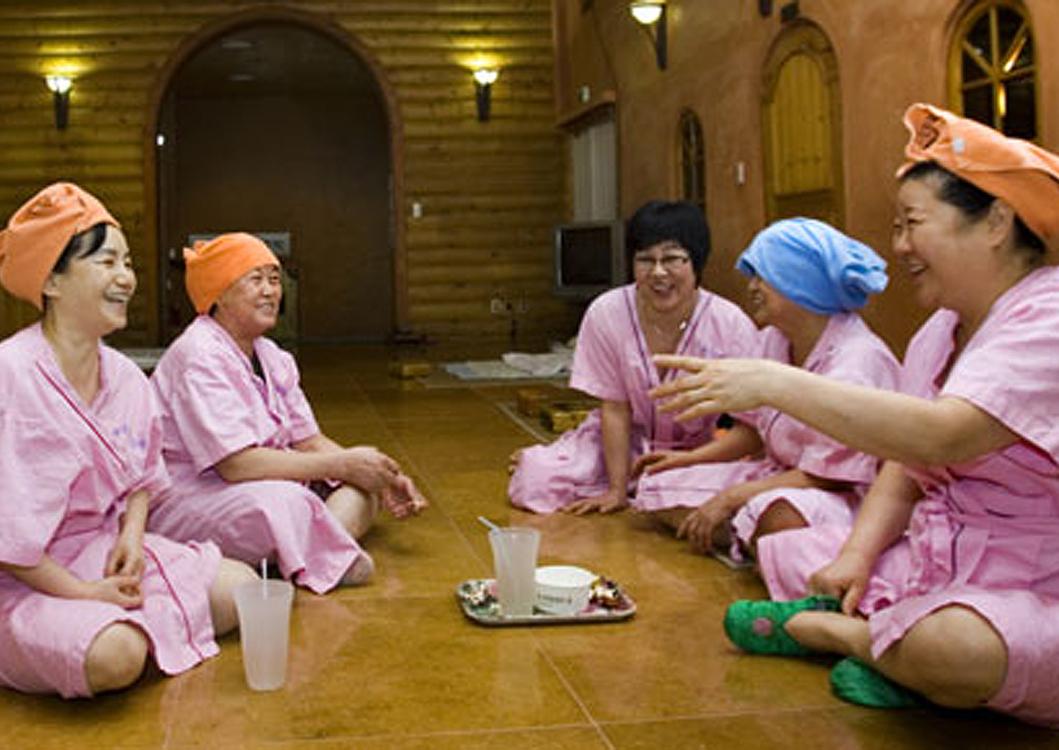 TRADITIONAL AND PRESENT DICHOTOMY OF KOREAN PUBLIC SPACE
TRADITIONAL AND PRESENT DICHOTOMY OF KOREAN PUBLIC SPACE
In contemporary Korea, the notion of “public” appears to be tricky, especially to the eye of a westerner. There seems to be a persisting tension between a logic of behaved public display and one of concealment and intimacy, that are both reflected by two different types of public spaces. Exploring the complex relationship between large-scale public spaces and the more fine grain network of semi-public rooms in Seoul helps us uncover how social life unfolds in metropolitan contemporary Korea.
The element of the bang, in particular, is interesting as it makes us question what we mean by the notion of public and stretches our perspective on what is a workable public space. As we often tend to see elements of our own urban culture as an arrival point, the logic behind the spread of the “bang culture” in Seoul may constitute a lesson on alternative strategies of life in contemporary cities and help us take one step away from our euro-centric perspective.
The history of the bang-spaces of Seoul should also warn us about the possibility that future spatial and economic constraints could drive houses in the western world to externalise these types of spaces, creating a similar demand of private spaces for public practices, or – as it is already happening in cities like London – pushing municipalities to increasingly delegate the provision of “public” spaces to the private sector.
It is yet to be seen how the recent development of new public spaces in Seoul will influence urban behaviour and expectations of spaces for social mingling in Korea. However, the current use of protected spaces of the bang suggests their role in providing spaces for social interaction has not been significantly affected by the increasing availability of new public spaces, which naturally lend themselves to uses and behaviours different to those typical of enclosed spaces.
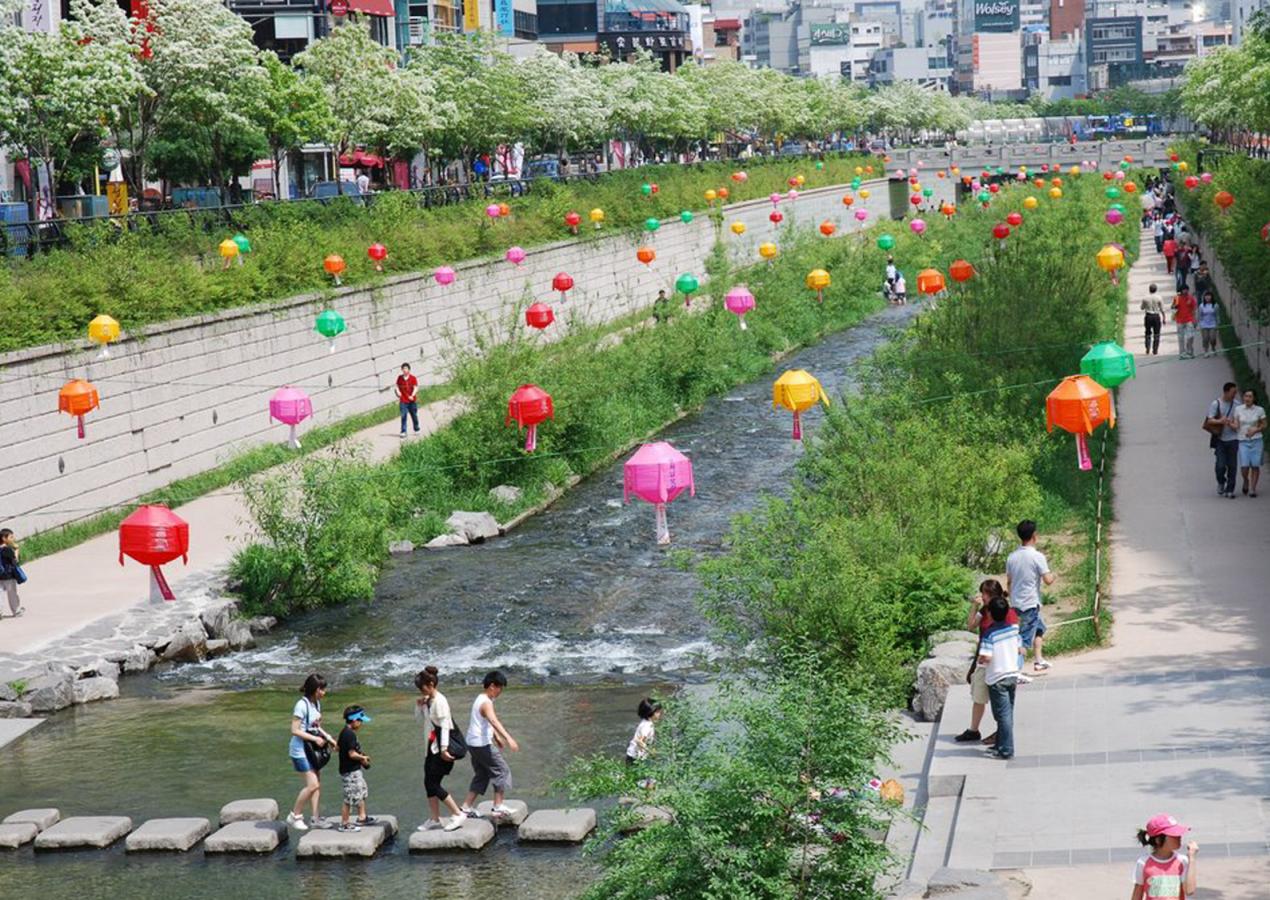
Michela Leoni is a young professional trained in town planning and urban regeneration, currently working for the Municipality of Venice, Italy. She is interested in the development of strategies for changing territories, the role of perception in shaping behaviours in urban contexts and in its potential as a tool for regeneration. Michela spent the last 5 months in Seoul researching urban development and public space practices.
